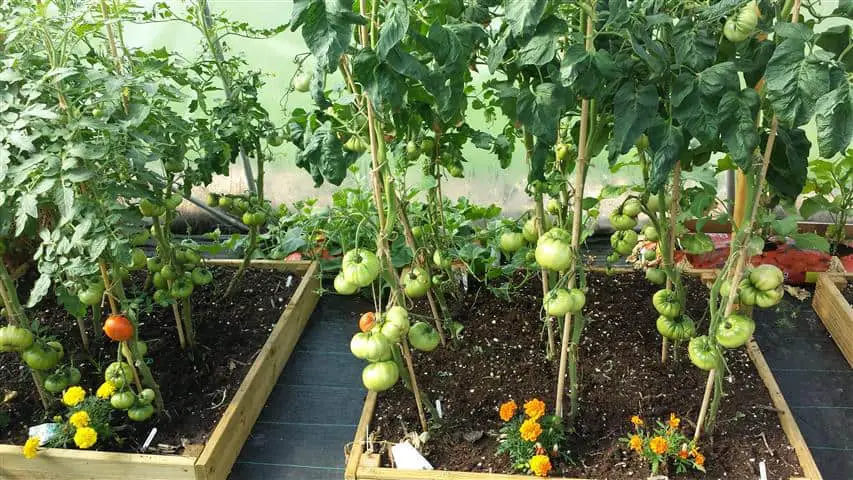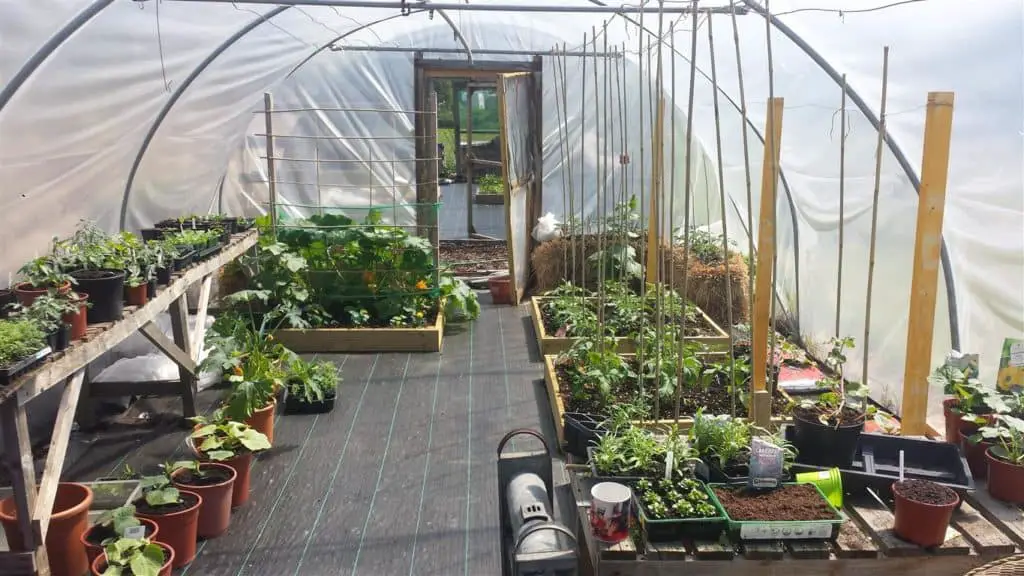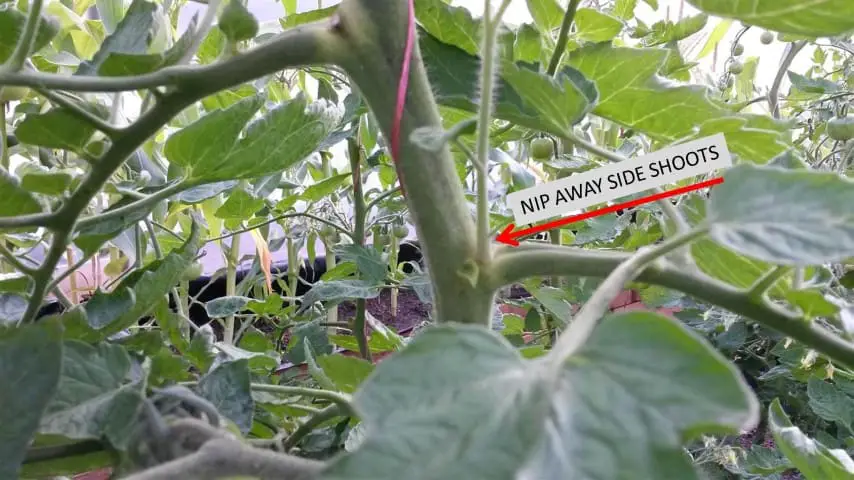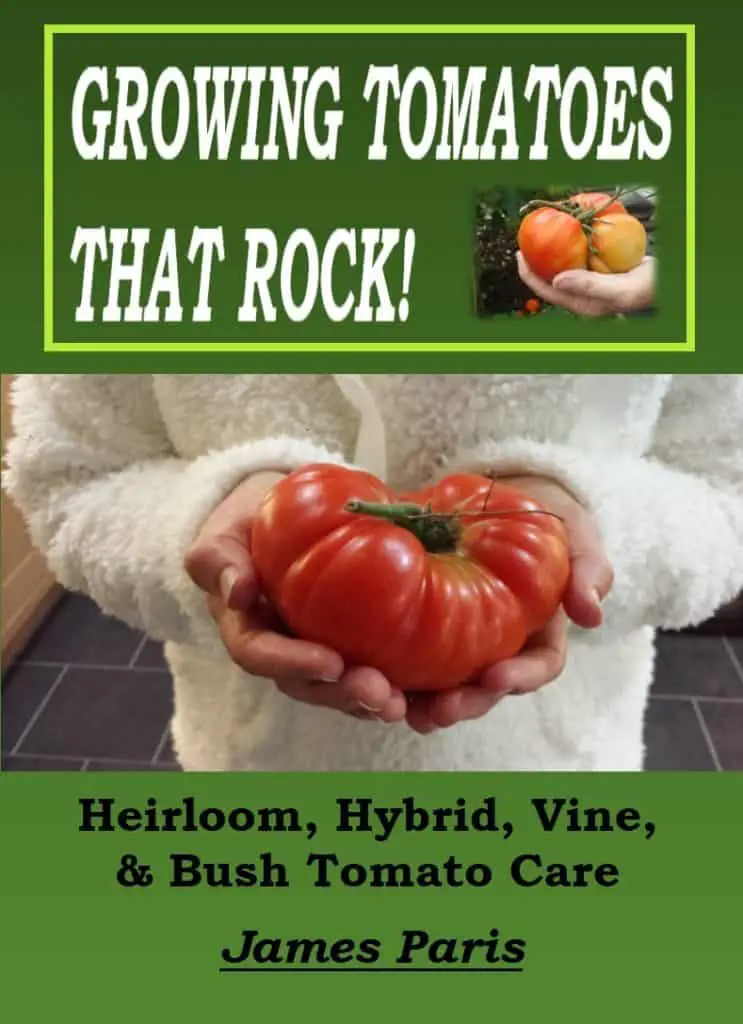Growing Tomatoes In Scotland.
I well remember my first experience of growing tomatoes, I was about 11 years old and we had just moved into a house that had a large derelict greenhouse. My first task was to help my father to cover the old wooden frame with polythene (we could not afford to do it with glass).
I was amazed at just how effective this was, and in no time we had our greenhouse ready to grow Tomatoes for the family.

We got some young Tomato plants about 6″ high and planted them in neat rows on the floor or bed of the greenhouse, so that I had about 40 Tomato plants under my care.
This was my first experience as a grower, and I have to say a very rewarding one, that has lasted through the years as one of these good memories that you keep you ‘warm and cosy’ inside.
Growing Tomatoes in a greenhouse:
My family live in Scotland, so the option of growing Tomatoes outside did not really exist for us, as the weather is simply to cold and wet – even throughout what we laughingly call ‘summer time’!
After I had been shown how to plant the Tomato plants, I then had to care for them. I soon found out that as is the case with all living things, you simply cannot just leave them to their own devices and hope for the best.
As soon as they were in the ground, I placed canes alongside which were secured to the roof of the greenhouse for extra support. Without this support the plants would simply get top heavy and fall over, destroying the crop.
would simply get top heavy and fall over, destroying the crop.
In later years of course I found out the joys of growing in a polytunnel and utilizing 4 foot square raised beds to grow my Tomatoes – with much greater success overall.
beds to grow my Tomatoes – with much greater success overall.

Pruning the tomato Plants For Maximum Yield:
In the heat of the greenhouse the Tomato plants grow very rapidly, and I was soon involved with the pruning away of the side-shoots. These occur just at the point where the leave exits the stem of the plant, and must be pruned away early as they will soon overbalance the plant as well as drain away the goodness from the main crop.
grow very rapidly, and I was soon involved with the pruning away of the side-shoots. These occur just at the point where the leave exits the stem of the plant, and must be pruned away early as they will soon overbalance the plant as well as drain away the goodness from the main crop.
This is an important almost daily task if you want to maximise the main crop both in quality and numbers of fruits produced.

This of course applies to vine or indeterminate tomato varieties where you want the plant to grow strong and straight with a sturdy stem able to hold heavy tomato crops.
Bush tomatoes like many cherry tomato varieties, can be left to bush out and grow a bit wild to maximise fruit production.
Feeding Tomato Plants Naturally
In order to get a good harvest of quality Tomatoes, then the Tomato plants must be fed regularly. This feeding cycle begins as soon as the plant has produced it’s first flowers, or rather when the flowers have begun to fall and the tiny tomato is left on the stem.
In these early days I used to feed the plants with a slurry mix, made up from horse manure and water !
I have to say it was super effective, and cost nothing at all as we had a couple of horses at the time. My evenings would be taken up by collecting this horse manure for my slurry mix – would kids still do this today I wonder 🙂 It probably breaks some health and safety regulation thats for sure.
Since these early days I have of course found out that there are many different ‘teas’ or feeds that can be used to feed the tomatoes. My favourite tomato feed is now a simple feed made from Russian Comfry plants.

This comfry is rich in phosphates and nitrogen along with a host of other minerals all of which are ideal for fruiting plants to improve the fruit production.
The joy of growing Tomatoes  ! feeding was just once every couple of days, with a ladel full of the slurry placed at the base of the plant. As the tomato plants grew and the crop became more evident, then this was increased to once per day in order to get the maximum crop possible.
! feeding was just once every couple of days, with a ladel full of the slurry placed at the base of the plant. As the tomato plants grew and the crop became more evident, then this was increased to once per day in order to get the maximum crop possible.
The fact was that my younger brother had a pony – which had a tendancy to bite when you least expected it – and so I had an almost unlimited supply of horse manure for my tomato feed.
Early lesson learned – take advantage of what is on your door step before spending your hard-earned cash on something else probably less efficient!.
This was in the days when the term ‘organic ‘ was never really thought about, but the truth is that it was a truely organic way to grow vegetables.
‘ was never really thought about, but the truth is that it was a truely organic way to grow vegetables.
Our veg was grown without the need of chemical or artificial fertilizers of any kind – mainly because we could not afford them – Turns out though that poverty done us a huge favour and kept us healthy ! Strange how things work out.
of any kind – mainly because we could not afford them – Turns out though that poverty done us a huge favour and kept us healthy ! Strange how things work out.
Growing Tomatoes – Summary:
The experience, especially in these early days of growing Tomatoes, was a very rewarding one. The satisfaction gained from growing my first crop of Tomatoes, led to a life-long interest in growing not only my own fruit and vegetables; but also rearing animals such as chickens, geese etc.
This in turn enabled me to become much more aware of the natural way of things, and how to care and look after the things that are dependent on you for survival – as you are on their wellbeing.
Making your own compost for instance is a fantastic way to maximise the natural things that surround us in our garden or backyard. It really is not difficult and can save a small fortune on store-bought fertilizers, and dare I say it – medical bills!
for instance is a fantastic way to maximise the natural things that surround us in our garden or backyard. It really is not difficult and can save a small fortune on store-bought fertilizers, and dare I say it – medical bills!
Companion planting methods go hand-in-hand with this way of thinking as it takes advantage of the natural way of things to both feed your veggies and protect them from insect attack. This is a skill set well worth knowing for any vegetable grower who wants to grow their veggies more in keeping with the natural laws and avoid chemical feeds and herbicides.
go hand-in-hand with this way of thinking as it takes advantage of the natural way of things to both feed your veggies and protect them from insect attack. This is a skill set well worth knowing for any vegetable grower who wants to grow their veggies more in keeping with the natural laws and avoid chemical feeds and herbicides.
There are many different fruit and vegetable varieties to consider, if you are thinking of going down the route of self-sufficiency. I would suggest that growing Tomatoes is a great first step, in this tremendously rewarding venture.
You May Also Be Interested in – Keyhole Gardening Permaculture

